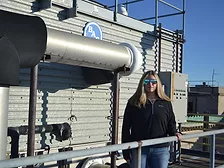Home » energy efficiency
Articles Tagged with ''energy efficiency''
Environmental concerns drive manufacturers to find innovative, smart solutions.
Read More
Energy equity and the electrification movement
Propane offers an affordable, versatile energy solution for construction projects.
December 17, 2021
CASE STUDY
Circulator pump reliability in extreme conditions
Renovation reduces energy consumption for military base housing.
December 16, 2021
Technology and talent lead the PHVAC industry into the future
Baylie Frost, VDC lead for Harvey’s Plumbing & Heating, represents the next generation of the plumbing industry.
December 14, 2021
Tankless water heaters continue to blossom in nonresidential applications
Manufacturers cite space and energy savings as key drivers in the wider acceptance of this technology by building stakeholders and operators.
November 15, 2021
2021 Mechanical Engineer of the Year: Brianne Hall
Fishbeck’s Brianne Hall is leading the charge to better the engineering community through development of personal certifications.
November 11, 2021
Keep your content unclogged with our newsletters!
Stay in the know on the latest plumbing & piping industry trends.
JOIN TODAY!Copyright ©2025. All Rights Reserved BNP Media.
Design, CMS, Hosting & Web Development :: ePublishing














